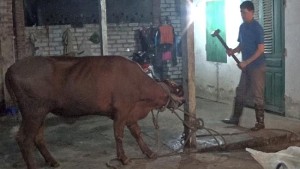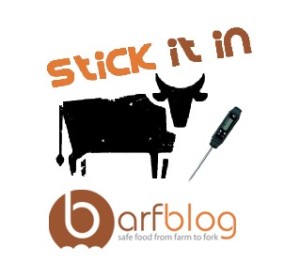When the health inspector showed up at Wolfgang’s Steakhouse in Beverly Hills last fall, he found a cockroach in the hall and poor sanitation in the kitchen. He found enough critical violations, he threatened to suspend their permit and said he’d be back in two weeks to make sure they had cleaned up.
 But seven months later, the inspector still has never been back to Wolfgang’s.
But seven months later, the inspector still has never been back to Wolfgang’s.
The county’s 10 million residents depend on the health department to inspect restaurants often, to make sure they’re clean and safe. But an NBC4 I-Team investigation has found LA County is failing to inspect many restaurants frequently, and food poisoning and filth at some eateries may be the result.
“We could be doing a better job in many areas,” says Angelo Bellomo, the head of the county’s restaurant inspection program, and director of LA County Environmental Health.
Restaurants like Nobu in Malibu, which serves sushi to celebrities like Halle Berry and Mel Gibson, are required to be inspected three times a year, according to LA County Health Department policy.
“I’d like to see three inspections a year in high-risk restaurants,” said LA County’s Bellomo.
Most restaurants are considered “high risk” because they handle raw meat, poultry, and fish.
But when I-Team examined the last two years of all restaurant inspections, it found thousands of high-risk restaurants aren’t getting anywhere near the required three inspections a year.
When 13 people who ate at Nobu contracted potentially deadly Norovirus in November 2014, the restaurant hadn’t had an inspection in over a year — October 2013. Nobu declined to comment to NBC4.
Nobu is hardly the exception.
“I felt terrible. There was headache, shaking, nausea,” Burt Holstein told NBC4, about the food poisoning he and six other family members got after eating at Lunasia Restaurant in Alhambra last May.
Inspectors showed up, ordered the restaurant to correct numerous violations, and were supposed to return in a few weeks.
But eight months later, Lunasia still hasn’t had a return visit from an inspector.
“If the restaurant was shown to have problems, if people have become sick, they should be inspecting the place often,” said food poisoning victim Holstein.
In fact, when there’s a food poisoning investigation at a restaurant, it’s LA County policy that an inspector must return to do a follow-up inspection within two weeks. But that often doesn’t happen.
Last December, the county investigated a complaint of food poisoning at the trendy Coast Cafe at Shutters Hotel in Santa Monica, and an inspector should’ve returned by early January. But records obtained by the I-Team show the inspector never came back, until he got another complaint of food poisoning more than three months later.
Chief inspector Bellomo told the I-Team he hopes the health department will soon start doing more frequent inspections. But an internal Health Department memo, obtained by the I-Team, said “second inspections” of most restaurants “shall not be conducted” this fiscal year because of low “staffing levels.”
Chief Bellomo admitted the problem isn’t money. Instead of filling the 60 or so vacant inspector positions, Bellomo said he’s chosen to hire more health department managers.
“You’re playing Russian roulette when you go out to dinner,” said Dr. Pete Snyder, a nationally known food safety expert who has trained health inspectors. “If you’re only inspecting once or twice a year, then the restaurants don’t fear you anymore.”
Diners are also finding that an “A” grade in the window doesn’t mean a restaurant has been inspected lately, or that it’s necessarily safe. Wolfgang’s, Coast Cafe at Shutter’s, Nobu, and Lunasia all had “A”s when people got sick there or when inspectors found critical violations.
 According to Australian media, shocking footage has emerged of live export Australian cattle being bludgeoned to death with sledgehammers in Vietnam.
According to Australian media, shocking footage has emerged of live export Australian cattle being bludgeoned to death with sledgehammers in Vietnam.







